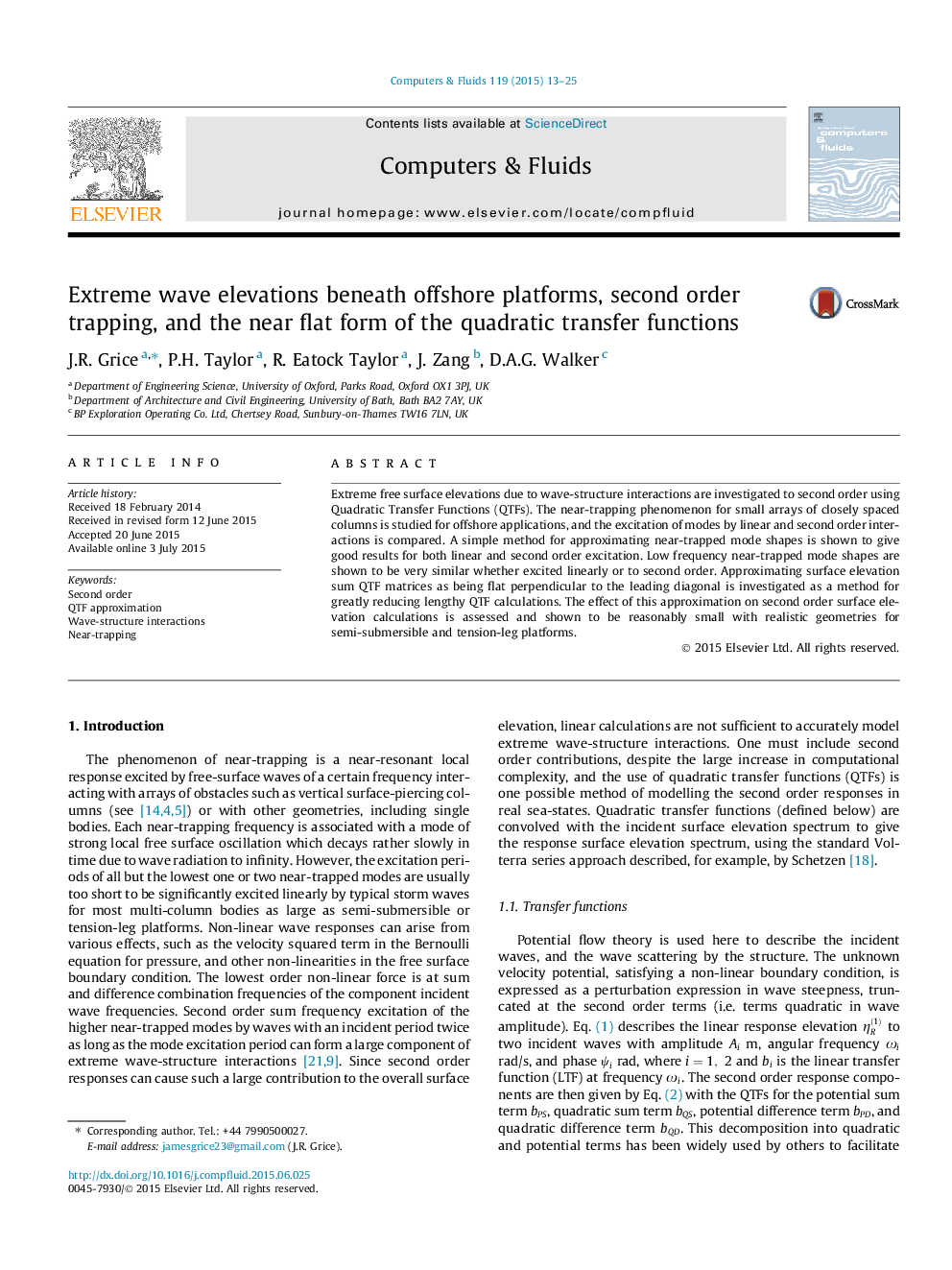| Article ID | Journal | Published Year | Pages | File Type |
|---|---|---|---|---|
| 761545 | Computers & Fluids | 2015 | 13 Pages |
•Extreme wave-structure interactions are investigated to second-order.•Excitation of near-trapped modes by 1st and 2nd-order interactions is compared.•Flat QTF matrix approximation used to minimise QTF calculations.•Accuracy of flat QTF approximation in surface elevation calculations is assessed.
Extreme free surface elevations due to wave-structure interactions are investigated to second order using Quadratic Transfer Functions (QTFs). The near-trapping phenomenon for small arrays of closely spaced columns is studied for offshore applications, and the excitation of modes by linear and second order interactions is compared. A simple method for approximating near-trapped mode shapes is shown to give good results for both linear and second order excitation. Low frequency near-trapped mode shapes are shown to be very similar whether excited linearly or to second order. Approximating surface elevation sum QTF matrices as being flat perpendicular to the leading diagonal is investigated as a method for greatly reducing lengthy QTF calculations. The effect of this approximation on second order surface elevation calculations is assessed and shown to be reasonably small with realistic geometries for semi-submersible and tension-leg platforms.
